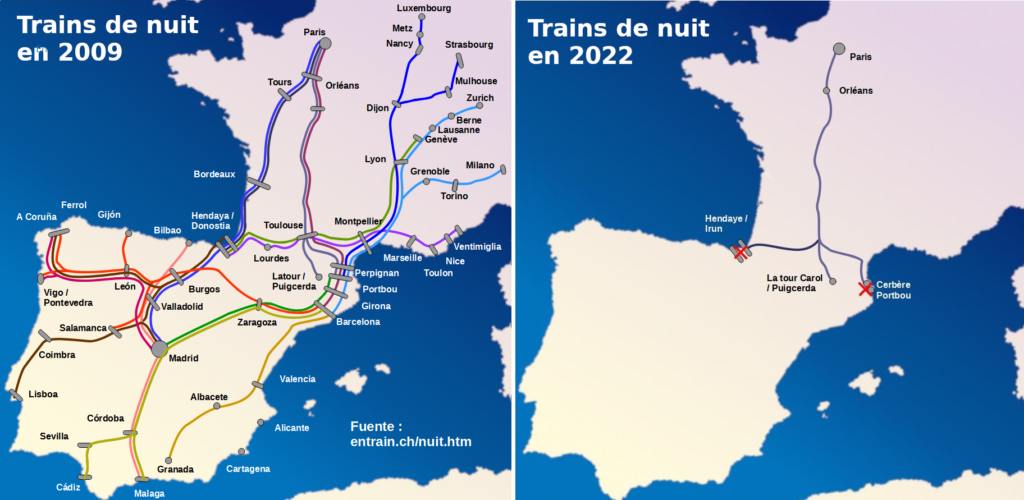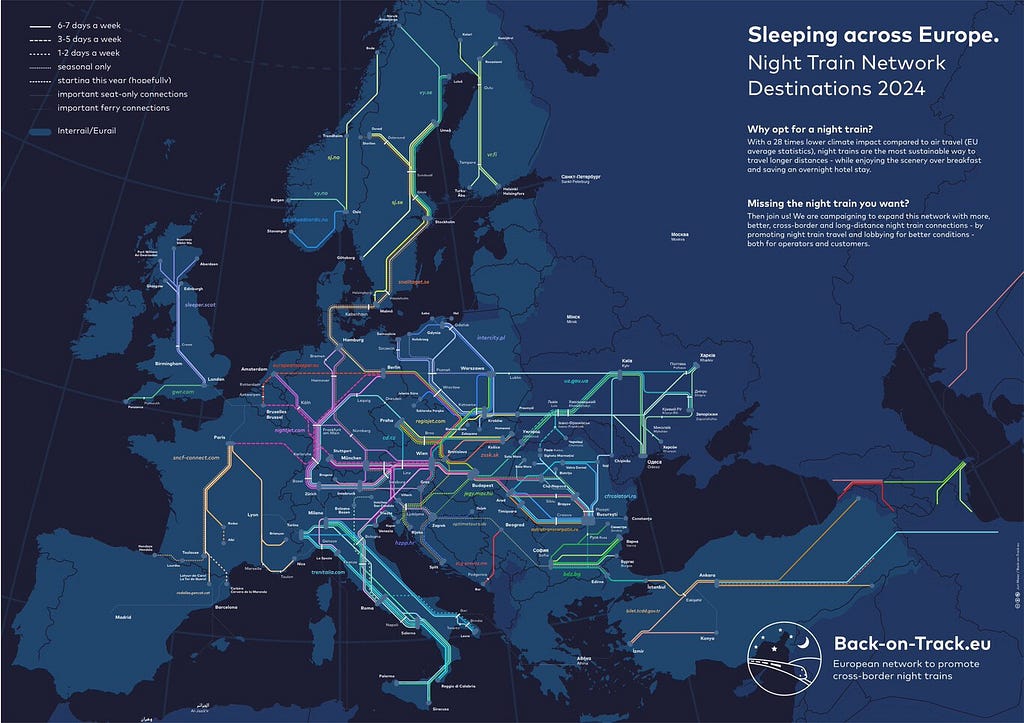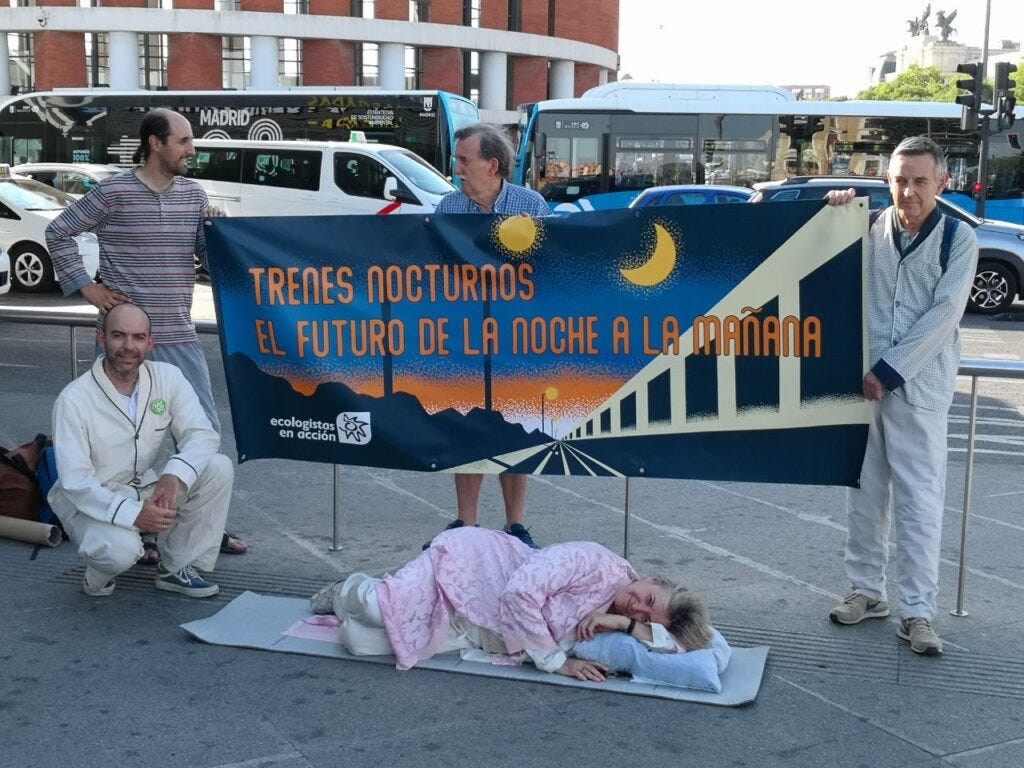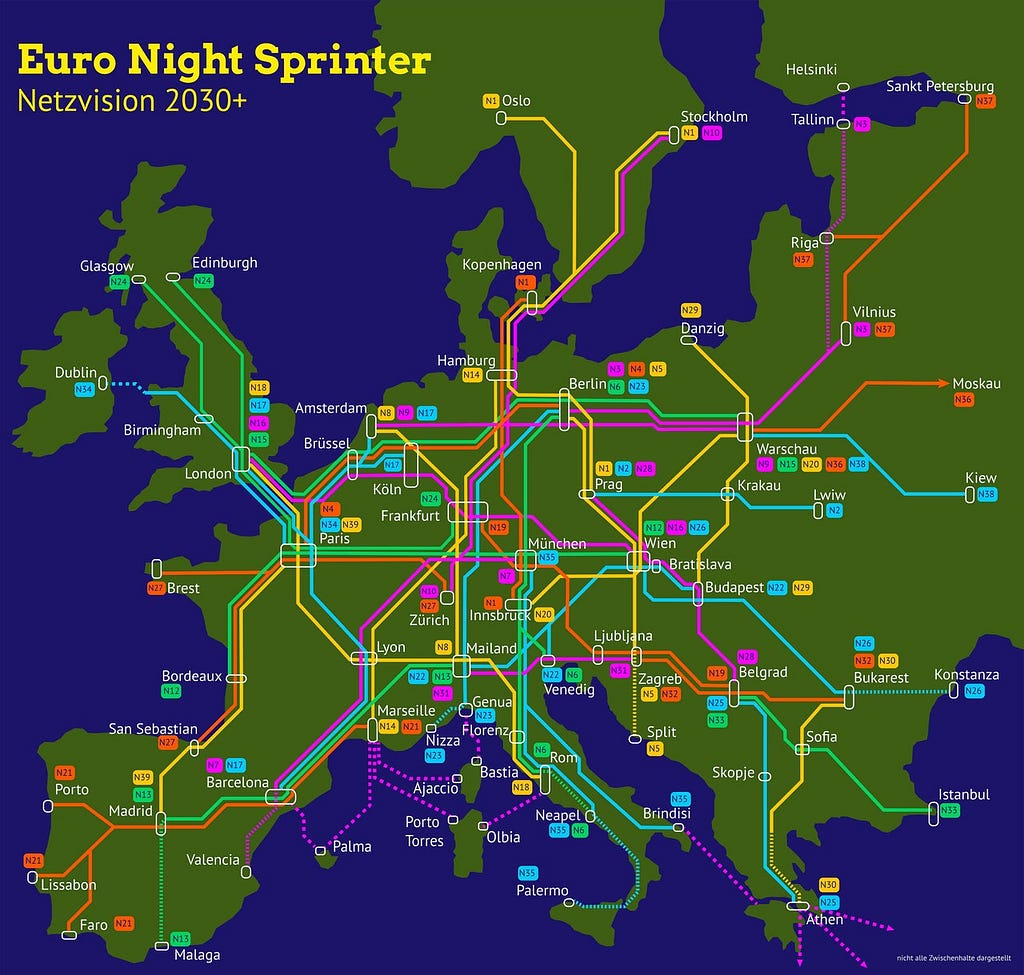It is necessary for Spain and Portugal to recover their night hotel trains
In Spain, the night train route map is bleak, and the pandemic dealt the final blow. The Spanish railway company RENFE dispensed with its last four night trains in 2020 and is not considering reopening them or launching others. And they claim that they are not profitable. Over the years, all the existing lines have disappeared, such as the one that linked Seville with Paris or Barcelona with Vigo. The most we have achieved has been to have 14 routes of which today there are none left that connect us with Europe. But the situation is changing, at least in Europe, and Spain and Portugal have to join the change.
In Europe things are being done differently. 2024 will bring good news for travelers interested in hotel trains. The main European railway companies continue to implement new routes and recover others. This week alone, three new night train routes will debut: Berlin to Paris, Berlin to Brussels and Paris to Aurillac (France). A quick look at back-onTrack.eu’s night train map in Europe gives us an idea of how this mode of transport continues to grow in the old continent thanks to state support.
ÖBB Nightjet, the Austrian national rail operator has introduced its latest trains with highly sought-after features such as wireless charging points, free Wi-Fi and private compartments that have their own showers and toilets. And the Berlin-Paris route (which debuted yesterday) is 14 hours, so it’s best to do it in your pajamas, you get on the train at night, and you arrive at your destination first thing in the morning. It is this company that has recovered the Berlin-Paris night train service after a decade and is launching with three routes per week, as well as the new Berlin-Brussels route of ÖBB Nightjet, which operates 30 lines of this type.
It is not a particularly economical means of transport (a round-trip ticket from Berlin to Vienna with a bed included can cost around 540 euros), but it is a more relaxed way of getting around in which the road is part of the trip. Immediacy and haste versus contemplation. And for this to succeed in 2023 is an achievement. On the other hand, the night train network will be essential to comply with climate agreements, and the modal change to this means of transport could mean a 95% reduction in greenhouse gas emissions compared to air travel.
The defense of the night train as the most environmentally friendly means of long-distance transportation deserves fairer taxation when compared to that applied to aviation (which remains practically tax-free) and proposing that a trip by train costs at most half of what an equivalent plane trip costs, it is possible if the taxation of trains is reduced and that of plane trips is increased, forcing airlines to pay taxes for the fuel they consume.
From Portugal and Spain, environmental and travel organizations are taking part in actions to demand night trains such as the Lusitania, which ran from Lisbon to Madrid, and the Sud Expresso from Lisbon to Hendaye.
Galicia has been calling for the connection of day and night high-speed trains from A Coruña to Lisbon, via Porto, a line that is vital for the Atlantic Axis. Until 2020, the Barcelona-Galicia, Madrid-Galicia, Madrid-Lisbon and Lisbon-Hendaye night services operated in Spain. Before that, the Barcelona-Granada route was also available, or the Barcelona-Zurich and Madrid-Paris hotel trains.
Comparing pleasure trips by train with train trips out of necessity, it is unacceptable that luxury tourist trains should be maintained, such as the Transcantábrico, a kind of ‘Orient Express’ through the north of Spain that is so expensive that not even Buying 10 plane tickets in business class would pay off, which would mean launching the long-distance night trains, and finishing the pending sections of the connection of Portugal and Spain by train from Lisbon to Madrid, and to Galicia. There are many millions of people who would benefit from having these railway infrastructures. If the Next Generation Funds were useful for anything, it was for projects like these, but they are being invested in other things that are less useful for fewer people.
EURO NIGHT SPRINTER: THE FUTURE OF EUROPE?
In the current context, in which, in addition to the climate crisis, the increase in fuel prices is of particular concern, many media outlets have recovered an innovative project presented by the Green Party in Germany last September 2021.
The project clearly shows a system that, yes, should be supported by comfortable, silent and fast trains (from 200 to 250 kilometers per hour, creating journeys that last from nine to 14 hours on average) already approved by all the countries of Europe.
The one baptized as Euro Night Sprinter is therefore a trans-European network of night trains that would consist of 40 international long-distance lines. By 2030, it would connect more than 200 cities and places across Europe, from Lisbon in the west to Moscow in the east and from Helsinki in the north to Malaga in the south.
An intuitive reservation platform common to all companies should be created, with competitive prices that generate fair conditions of competition with flights. All of this would require a unified system of control and coordination for the various national railway networks in Europe, which, on the other hand, is something that the European Railway Agency has already requested, to create a single quality, high-speed rail transport system, and above all sustainable and economical.
New routes are created every day to improve communication by land. In addition, night trains are increasingly accepted by travelers, who not only want to try to stop the generation of CO2, but are also looking for a more relaxed way to reach their destination. Will the Euro Night Sprinter be a reality by 2030?
Let’s hope that the plan becomes a reality as new lines emerge, such as those promoted by the company NightJet, which was born from the union between the railway companies SNCF (France), DB (Germany), CFF (Switzerland) and ÖBB (Austria). connect Zurich with Barcelona, also proposed by the Generalitat that aims to establish a high-speed daytime route between Barcelona, Montpelier and Toulouse, or the future night line between Amsterdam and Barcelona, operated by European Sleeper.
The rails already exist, and so do the trains. The only thing left is to organize rail transport in another, more useful way, and for Spain and Portugal, the sooner they begin their adaptation to current times and circumstances, the better. There are already several railway operators providing services in Spain. It is to be hoped that RENFE does not miss this train.
Disclaimer: Investing carries risk. This is not financial advice. The above content should not be regarded as an offer, recommendation, or solicitation on acquiring or disposing of any financial products, any associated discussions, comments, or posts by author or other users should not be considered as such either. It is solely for general information purpose only, which does not consider your own investment objectives, financial situations or needs. TTM assumes no responsibility or warranty for the accuracy and completeness of the information, investors should do their own research and may seek professional advice before investing.






